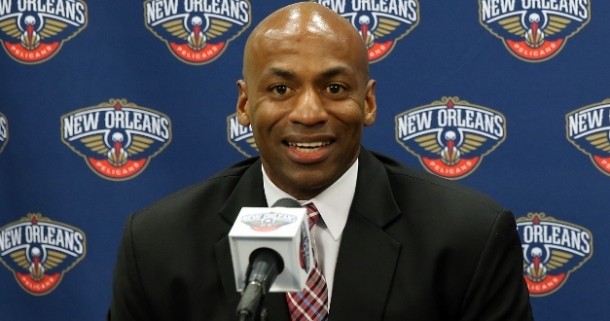« Re-Imaginaing Omer Asik Under Gentry
How Demps Can Maximize Depth and Flexibility this Summer

The New Orleans Pelicans two biggest moves of 2015 were set up by decisions that Dell Demps made way back in the summer of 2014. Though he couldn’t foresee the exact moves at the time, Dell knew that declining Austin River’s 4th year option would make him more appealing on the trade market. In a similar move, Demps used the room exception to sign John Salmons to a one-year deal at a salary that was perhaps a little above market value, but allowed him to be traded for a slightly higher salary. Those two decisions paid off big time, as they eventually led to the Pelicans acquiring Norris Cole and Quincy Pondexter.
Demps is often referred to as ‘The Chessmaster‘, as his bigger moves can usually be traced back to smaller ones made months earlier. While he can’t foresee the exact deal, obviously, Demps succeeds by putting himself in a position where he has as much flexibility and as many desired assets as possible to make a quality move. The summer of 2015 is certainly not the finish line for Demps when it comes to roster construction, especially with the cap talking a huge jump the next two years and multiple Pelicans set to come off the books.
If Norris Cole signs his qualifying offer and Omer Asik re-signs, as expected, the Pelicans will have 8 of their top 9 players back and are still in position to bring back Cunningham, Ajinca, Babbitt, and Withey if they so choose. Extending Withey the qualifying offer and using the 56th pick to put another cheap asset on the roster would bring the Pelicans roster up to 10. The Pelicans have Early Bird rights on both Alexis Ajinca and Luke Babbitt, but if they want to bring Dante Cunningham back, they will likely either have to use part of their Mid-Level Exception or the Bi-Annual Exception.
The Mid-Level Exception allows the Pelicans to dish out a deal that goes up to 4 years and it could start a player off at as much as $5.464 million. But the exception could also be split up amongst multiple players and by doing that, in addition to keeping the years to a minimum, could offer Dell maximum flexibility in February and in July of 2016. They could hand out $3 million to Cunningham, which would be slightly higher than teams with the Room Exception could offer, and then use the remaining $2.4 million (which is slightly higher than the Bi-Annual), to bring in another free agent on a one-year deal. Then, finally, use the Bi-Annual to outbid a team that can offer just minimum contract at the end of July.
All of the exceptions, combined with using some or all of their Early Bird rights could legitimately help Dell build a roster that is 12-14 deep with players that Gentry could trust in any situation. Imagine bringing Cunningham and Ajinca back to join the top 8 and then adding someone like Chris Copeland or Wesley Johnson with the rest of the MLE and Jeff Ayers with the BAE. In a best case scenario, everybody works out and the Pelicans have one of the deepest teams in the NBA. If it doesn’t work out, and you keep all those deals short, you have a ton of trade assets come February and plenty of cap space in July if no trade is made.
While it is exciting to think about adding a guy like Shawn Livingston with the MLE, and providing a major boost to your team, the MLE contract could turn into a Spencer Hawes type of anchor around your salary cap that you can’t flip. And if that happens, then not only do you have less to move at the deadline, but you walk into the summers of 2016 and 2017 then you would have if you kept these exception deals short. And while this might have been hard to sell players on in years past, it shouldn’t be so hard to get guys to commit to one-year deals this summer because everyone wants to hit the FA market next summer when the cap jumps over 20 million dollars.
The lone issue with Dell taking this route is that it will likely push the Pelicans into the luxury tax. The tax line is projected to be $81.6 million next season, and just the top 8 players alone will count for $70 million. Add Withey, the 56th pick, and the MLE to that and you are at close to $78 million. Add the BAE, and you are at $80 million, and if you add Ajinca to that, you are definitely over the luxury tax line. In all likelihood, re-signing Ajinca and using all of the Mid-Level Exception puts the Pelicans over the luxury tax and it wouldn’t make much sense to do that for a guy who isn’t guaranteed to get significant minutes for a team that is already deep.
At the end of the day, Dell could choose 2-4 guys to fill out this roster on short-term deals, whether they are guys that were here last year or free agents from other teams. Doing that will provide depth and position flexibility for Gentry while also putting Demps in a position to upgrade at the deadline or next summer. The key will be to kept deals as short as possible, like he did with both Austin Rivers and John Salmons last year, so in the event that those players don’t work out, Dell can still play Chessmaster and work his magic again.





3 Comments